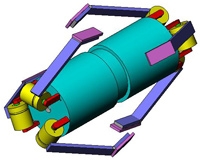Miniaturization is a common goal when it comes to improving modern technology, and involves making more advanced models of devices smaller than their predecessors. The main reason to pursue this goal is that smaller devices are easier to transport and work with than larger ones, and as technology increases, the smaller size comes without any loss in functionality. In many cases, the decrease in size actually comes with an increase in functionality, as miniaturization is often combined with other types of improvements. The perfect example of this can be seen in the advancement of computing technology.
ENIAC (Electronic Numerical Integrator and Computer) was one of the first real computers, and was built for the United States military in 1945. The massive machine weighed roughly 30 tons and was more than 100 feet long, and was considered one of the most advanced machines of its day. Although this technology was amazing for its time, after less than 70 years of advancement in computing technology, a silicon chip that is barely larger than a grain of sand has the same computing power as the wall-size ENIAC. Mobile phones are another perfect example of miniaturization in action, as the first true mobile phone weighed 2.5 pounds and was 9 inches long. When compared to a modern cellphone that can be carried in the palm of a hand, these first phones seem enormous. Advancements in miniaturization also come with other benefits, as making devices smaller allows them to be combined in novel ways. Modern cellphones are a good example as many have all the functionality of a phone, digital camera, radio receiver, voice recorder and flashlight, all while possessing more computing power than was available to NASA in 1969. In light of these facts, the advances miniaturization makes possible are obvious and amazing.
While the advances that have already been made in miniaturization to this day are startling, scientists are working to push the envelope even farther with research into nanotechnology (sometimes shortened to nanotech) – a relatively new branch of science that is devoted to the manipulation of matter on the molecular and even atomic scale. As one can imagine, this field of research has many different areas of study and potential applications. A favorite use of nanotech in science fiction is the creation of microscopic robots, a field known as nanorobotics, but there are many other potential applications of the technology, ranging from the creation of new composite materials, to improvements in computing power and even improvements in medical techniques. There are far too many potential uses of nanotech to discuss in a single article, and so I will mention some of the most fascinating potential uses of this technology in future articles.
In general terms, nanotech promises to allow humanity to create totally new structures and materials that were impossible to
There has been some evidence of potential risks that are linked to nanotech, but as research improves, steps will be undertaken to remove these threats and make nanotechnology cheaper, safer and easier to produce. It is a very real possibility that nanotechnology and the revolutionary materials and techniques it makes available will become the future of every branch of science and technology.

